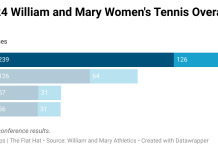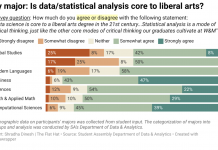The College of William and Mary is full of Type A students: They show up to every single 8 a.m. class fully awake; they stay in Earl Gregg Swem Library until 2 a.m. finishing their papers and they are active members in 15 different organizations. In high school, most students at the College were always at the top of all of their classes, and in college, they’re still fixated on being the best. As the recent focus on mental health at the College shows, students often push themselves too far in the desire to excel. While mental health services may be on the minds of many members of the Tribe, more attention should be given to body image at the College.
When a student with an eating disorder goes to the Counseling Center, that student will likely be referred to an outside center for treatment. We understand the Counseling Center’s need to do this in order to treat as many students as possible. That said, we would like to see more follow through on the College’s part to ensure that these students do receive treatment. One idea that came out of the most recent Student Assembly election was for the College to provide transportation for students to these outside facilities. In doing so, the College could reach a maximum number of students and make certain that no student slips through the cracks.
Promoting a healthier student body image is not a task that falls to the Counseling Center alone. Campus dining services needs to make changes to their meal options that will encourage students to make healthy, well-balanced choices. Students at the College often feel that they will only get unhealthy and unbalanced options with their meal swipes. The result is that students reduce portion sizes and dramatically cut their calories. This obsession is further driven by the College’s serving portions. Women frequently receive smaller portions than men, driving the idea that gender alone determines what an individual’s portion size should be. Furthermore, the addition of calorie charts to the wall at the Commons dining hall in Sadler Center creates the belief that everyone should be counting calories at all times.
Even after being consumed by dieting, students are still compelled to go to the Recreation Center and work out, regardless of how far they walk in a day. Students need to acknowledge how much they already exercise during the day so they do not push themselves too far and cause injuries. This spring the “Every Step Counts” program worked to highlight the amount of walking students do by encouraging Tribe members to wear a pedometer everywhere, demonstrating that healthy living is more than going to the gym.
As the College examines the mental health services on campus, it must consider body image as a problem that plagues members of the student body. This movement encouraging students to be more balanced must come from all areas of the College. We are all driven to be the best, but the College needs to do more to promote what it means to be healthy on an individual level.
Editor’s Note: Katie Demeria recused herself from the staff editorial to remain unbiased in her reporting.

































